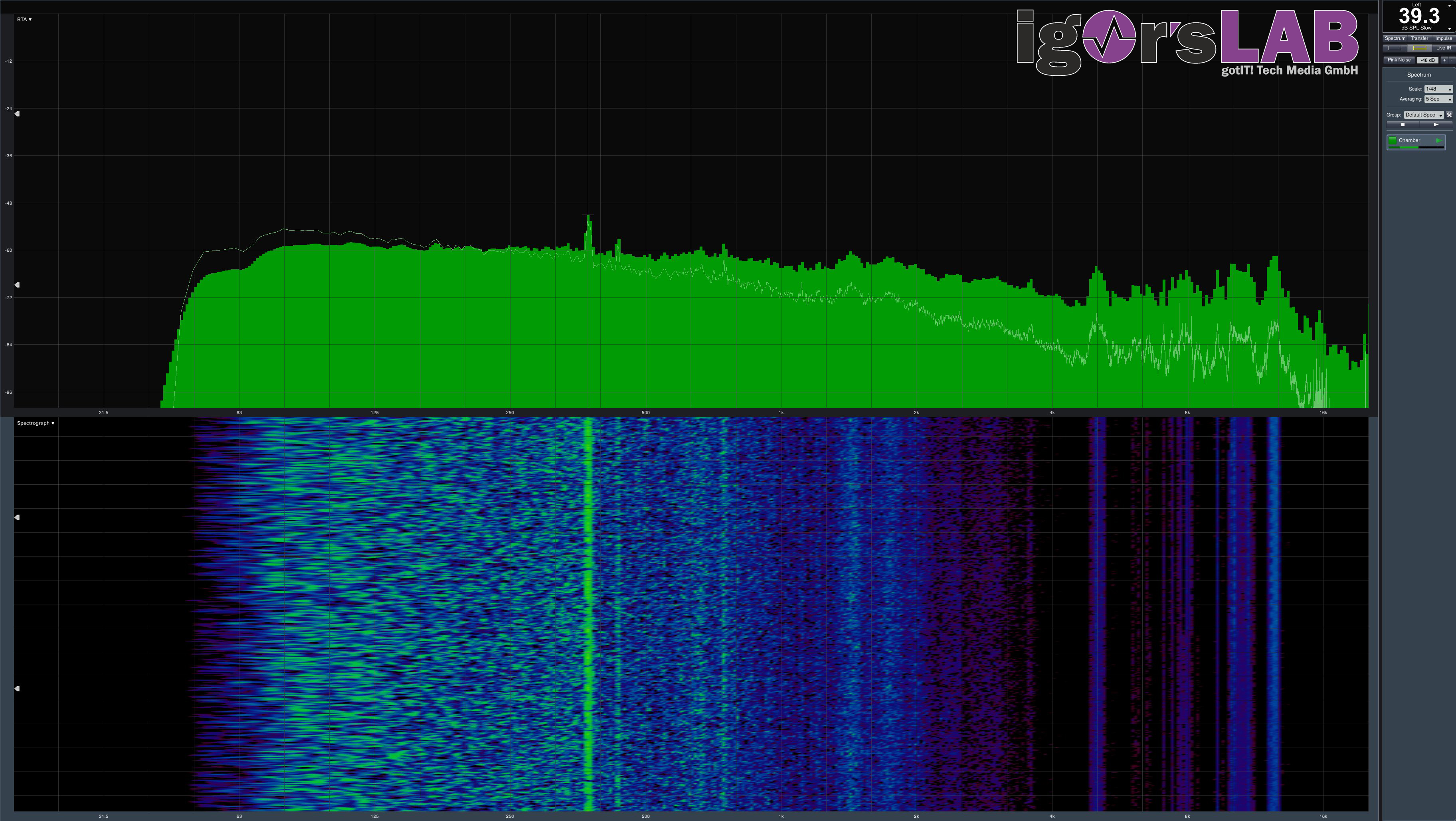The fan stop only works bim BIOS 2, the fans otherwise also rotate in the idle constantly with approx. 800 rpm. The hysteresis in BIOS 2 is also cleanly solved and I wonder why this has not been solved in general. With just over 1500 rpm in a closed housing, the card remains reasonably quiet even under continuous load.
If the blower is manually rotated to 100% at the maximum OC, the temperatures drop to approx. remarkable 50°C. However, this is more than just slightly audible, because it is simply loud. But nobody does that.
Let's look at the measured values again in direct comparison to the Founders Edition as a tabular listing:
| Gainward RTX 2080 Ti Phantom GLH |
GeForce RTX 2080 Founders Edition |
|
|---|---|---|
| Fan speeds Open Benchtable Maximum | 1447 rpm (Gaming, Peak) | 1907 rpm (Gaming, Peak) |
| Fan speeds Open Benchtable Average | 1433 rpm (warmed up) | 1887 rpm (warmed up) |
| Fan Speeds Closed Case Maximum | 1492 rpm (Gaming, Peak) | 1959 rpm (Gaming, Peak) |
| Fan Speeds Closed Case Average | 1488 rpm (warmed up) | 1942 (warmed up) |
| Noise Emission (Air) Average | 39.3 dB(A), Closed Case (Peak) | 39.6 dB(A), Closed Case |
| Noise Emission (Air) Idle | 31.8 dB(A) | 31.3 dB(A) |
| Sound characteristic / hearing impression | rushing, slightly oscillating, engine noise | rather noisy, hardly lower-frequency shares |
| Coil-feathers/electric noises | low, only for very high FPS numbers and for load changes | low, only for very high FPS numbers and for load changes |
Sound Spectrum
The measured 39.3 dB(A) is based on the measured 1488 rpm in the closed housing. We have applied the same gaming load to the open body in the measuring room, but we have fixed the fans to 1488 rpm in order to be able to adjust this value exactly. The result is roughly at the level of the Founders Edition, whereby the cooling is slightly better despite higher power consumption.
The soundscape is present and you can also perceive and measure motor noise for oscillating noise (see Peak on the spectral analysis above). The noise comes from the turbulence and is defined by a rather oscillating, but still not too intrusive noise of the three fans.




































Kommentieren